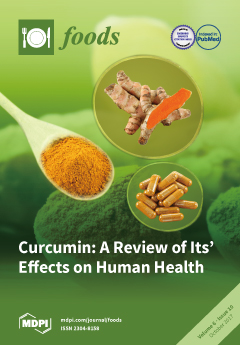The aim of the present study was to evaluate the presence of
Salmonella spp., verotoxigenic
E. coli (VTEC),
Vibrio spp., and Norovirus GI-GII in bivalve molluscs, cockles, and European grooved carpet shells (
Cerastoderma spp. and
Ruditapes decussatus) collected from a class
[...] Read more.
The aim of the present study was to evaluate the presence of
Salmonella spp., verotoxigenic
E. coli (VTEC),
Vibrio spp., and Norovirus GI-GII in bivalve molluscs, cockles, and European grooved carpet shells (
Cerastoderma spp. and
Ruditapes decussatus) collected from a class B growing natural bed in Sardinia (Italy). All of the samples were analysed for
Salmonella spp. detection according to European Commission Regulation (EC) 2285/2015. Detection and enumeration of
Vibrio spp. were performed according to previously published methods. Presumptive identification of
Vibrio spp. isolates was performed by means of conventional biochemical tests.
E. coli VTEC was isolated following a direct multiplex polymerase chain reaction (PCR) screening test. Norovirus GI and GII were determined by reverse transcriptase-polymerase chain reaction (RT-PCR). No
Salmonella spp. were detected. The prevalence of
Vibrio spp. was 90%, and the average contamination levels were 3.19 ± 1.07 and 2.84 ± 0.31 Log
10 cfu/g in cockles and European grooved carpet shells, respectively. The prevalence of
E. coli VTEC was 6.6%. All of the isolates showed a complete pathogenicity profile. The presence of Norovirus was highlighted in 25% of European grooved carpet shells samples. Results showed the typical microbiological profile of bivalve molluscs collected from backwaters and confirmed the capability of shellfish to accumulate
E. coli VTEC, pathogenic vibrios, and Norovirus. The presence of such pathogens in shellfish is of major concern for the safety of consumers.
Full article






